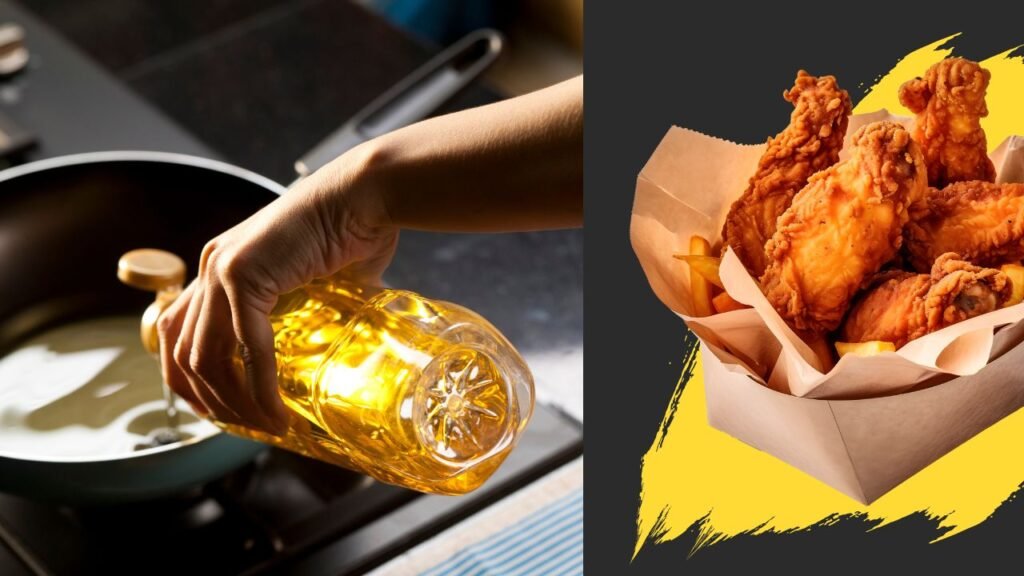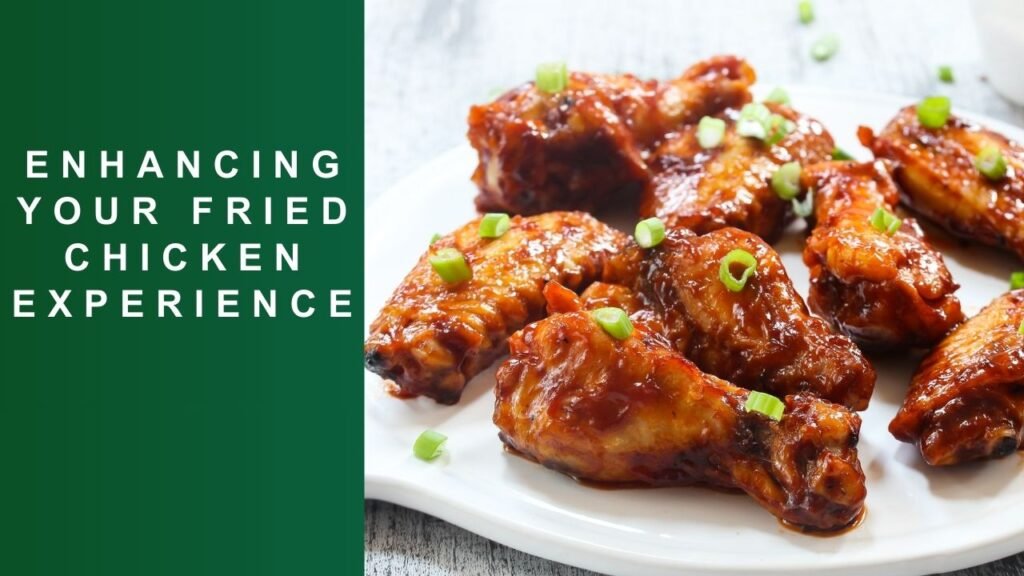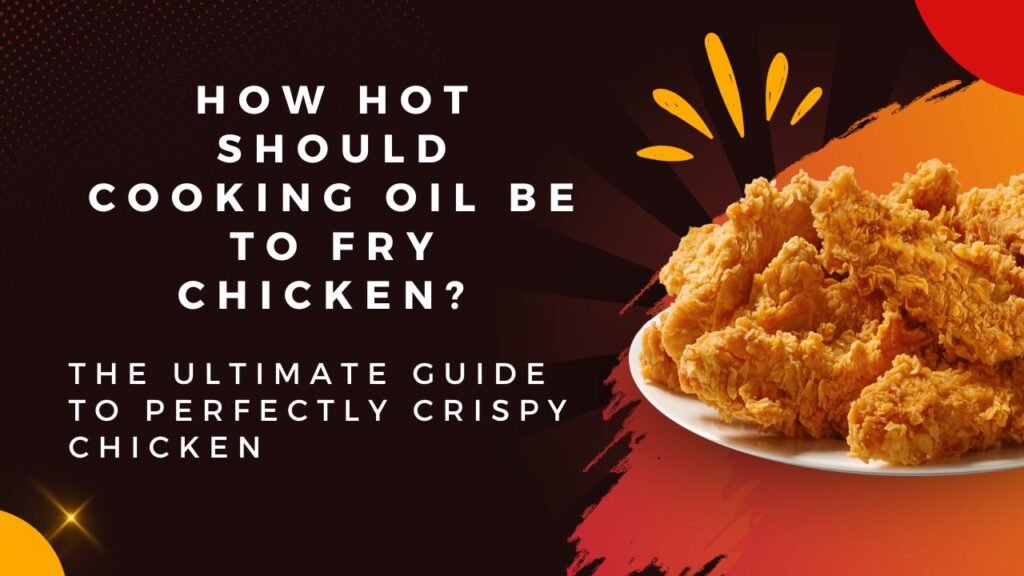Ever bitten into a piece of fried chicken that’s perfectly crispy on the outside and juicy on the inside? If you’ve wondered, how hot should cooking oil be to fry chicken, you’re not alone. Achieving that golden perfection isn’t just about the recipe; it’s all about the temperature. Let’s dive into the sizzling science and practical tips to help you master the art of frying chicken like a pro.
Why Temperature Matters in Frying Chicken
Frying chicken isn’t just about submerging it in hot oil; it’s a delicate balance of temperature and timing. How hot should cooking oil be to fry chicken is a crucial question because the right temperature ensures:
- Crispy Exterior: High enough heat to create a crunchy crust.
- Juicy Interior: Proper cooking without drying out the meat.
- Even Cooking: Prevents the outside from burning while the inside remains undercooked.
Understanding the science behind frying temperatures can transform your chicken from mediocre to mouthwatering.
The Ideal Temperature for Frying Chicken
What is the Perfect Temperature?
The sweet spot for frying chicken lies between 350°F (175°C) and 375°F (190°C). This range allows the chicken to cook thoroughly while developing a crispy, golden-brown exterior.
Why This Range?
- 350°F (175°C): Suitable for larger pieces, ensuring the inside cooks without burning the outside.
- 375°F (190°C): Ideal for smaller pieces or when you want a quicker, crispier finish.
How to Measure the Temperature
Maintaining the right oil temperature is essential. Here are some tools and tips:
- Use a Deep-Fry Thermometer: The most accurate way to monitor oil temperature.
- Candy or Instant-Read Thermometers: Can also work if you don’t have a deep-fry thermometer.
- DIY Methods:
- Bread Test: Drop a small piece of bread into the oil. It should sizzle and turn golden brown in about 60 seconds at 350°F.
- Wooden Spoon: Insert the handle of a wooden spoon into the oil. If bubbles form around it steadily, the oil is ready.
Table: Temperature Guidelines for Frying Chicken
| Chicken Part | Ideal Oil Temperature | Cooking Time |
|---|---|---|
| Drumsticks | 350°F (175°C) | 12-15 minutes |
| Thighs | 350°F (175°C) | 15-18 minutes |
| Wings | 375°F (190°C) | 8-10 minutes |
| Breasts | 350°F (175°C) | 10-12 minutes |
| Tenders | 375°F (190°C) | 6-8 minutes |
Choosing the Right Cooking Oil
Not all oils are created equal when it comes to frying. Selecting the right type can make a significant difference in both flavor and health benefits.

Best Oils for Frying Chicken
- Peanut Oil: High smoke point (450°F) and a neutral flavor make it a favorite for frying.
- Canola Oil: Affordable with a high smoke point (400°F) and mild taste.
- Vegetable Oil: Versatile and widely available, suitable for high-heat frying.
- Sunflower Oil: Light flavor and high smoke point (440°F) ideal for crispy chicken.
Oils to Avoid
- Olive Oil: Lower smoke point (375°F) can lead to burning and unwanted flavors.
- Butter: Low smoke point makes it unsuitable for high-heat frying.
Preparing Your Chicken for Frying
Essential Steps for Perfectly Fried Chicken
- Choose the Right Cut: Bone-in, skin-on pieces retain moisture better and add flavor.
- Seasoning: Marinate or brine your chicken to enhance flavor and juiciness.
- Coating: Whether you prefer a simple flour coating or a seasoned batter, ensure even coverage for a crispy texture.
- Resting: Let the coated chicken rest for a few minutes before frying to help the coating adhere.
Tips for Even Cooking
- Uniform Size: Cut chicken pieces to a similar size for consistent cooking.
- Avoid Overcrowding: Fry in batches to maintain oil temperature and prevent steaming.
- Flip Carefully: Turn chicken pieces gently to avoid losing the crispy coating.
The Frying Process: Step-by-Step
Step 1: Heat the Oil
Pour enough oil into a deep skillet or fryer to submerge the chicken pieces. Heat it to the desired temperature (350°F – 375°F) using a thermometer.
Step 2: Test the Oil
Use the bread or wooden spoon method to ensure the oil is at the right temperature before adding the chicken.
Step 3: Fry in Batches
Carefully add the chicken pieces to the hot oil, ensuring not to overcrowd the pan. This helps maintain the oil temperature and allows for even frying.
Step 4: Monitor and Adjust
Keep an eye on the oil temperature, adjusting the heat as necessary to stay within the ideal range. Add more oil if needed to maintain the temperature.
Step 5: Drain and Serve
Once the chicken is golden brown and cooked through, remove it with a slotted spoon or tongs and drain on a paper towel-lined plate. Serve hot for the best experience.
Table: Common Frying Mistakes and How to Avoid Them
| Mistake | Why It Happens | Solution |
|---|---|---|
| Oil Too Hot | High heat can burn the coating before cooking the meat | Use a thermometer and maintain 350°F – 375°F |
| Oil Not Hot Enough | Chicken absorbs more oil, making it greasy | Preheat oil properly and use high-smoke point oils |
| Overcrowding the Pan | Drops the oil temperature, leading to uneven cooking | Fry in small batches and avoid stacking |
| Using the Wrong Oil | Low smoke points can burn and affect flavor | Choose oils like peanut, canola, or vegetable oil |
| Not Draining Properly | Excess oil makes chicken soggy | Use paper towels or a wire rack to drain excess oil |

Enhancing Your Fried Chicken Experience
Adding Flavor
- Season the Oil: Add herbs or spices to the oil for an infused flavor.
- Marinades: Soak chicken in buttermilk or a seasoned marinade before coating.
- Spiced Coatings: Incorporate spices like paprika, garlic powder, or cayenne into your flour for extra zest.
Healthier Frying Tips
- Use Healthier Oils: Opt for oils with higher monounsaturated fats like canola or peanut oil.
- Drain Excess Oil: Place fried chicken on a wire rack instead of paper towels to reduce oil absorption.
- Bake Instead of Fry: For a similar crispy texture with less oil, consider oven-frying.
Personal Reflections: My Frying Journey
I remember the first time I tried frying chicken at home. The excitement of creating that perfect crunch was exhilarating, but so was the frustration when my oil was either too hot or not hot enough. Through trial and error, I learned that how hot should cooking oil be to fry chicken is not just a question—it’s the key to culinary success. Now, armed with the right temperature and techniques, every batch turns out golden and delicious. It’s amazing how a bit of temperature knowledge can elevate your cooking game!
FAQs About How Hot Should Cooking Oil Be to Fry Chicken
1. What happens if the oil is too hot?
If the oil temperature exceeds 375°F (190°C), the chicken’s exterior can burn while the inside remains undercooked. Additionally, excessively hot oil can become a fire hazard.
2. What if my oil temperature drops while frying?
When oil temperature drops, the chicken can absorb more oil, resulting in greasy and soggy chicken. To prevent this, avoid overcrowding the pan and adjust the heat as needed to maintain the temperature.
3. Can I reuse frying oil for chicken?
Yes, but it’s essential to strain and store the oil properly between uses. Reused oil should be free of food particles and kept in a cool, dark place to extend its lifespan.
4. How can I tell when the oil is ready for frying?
Using a thermometer is the most accurate method. Alternatively, you can use the bread or wooden spoon test: bread should turn golden brown in about 60 seconds, or bubbles should form steadily around the spoon.
5. What is the best cookware for frying chicken?
A deep, heavy-bottomed skillet or a deep fryer with a temperature control feature is ideal for maintaining consistent oil temperature during frying.
Final Thoughts
How hot should cooking oil be to fry chicken? The answer lies between 350°F (175°C) and 375°F (190°C). Maintaining this temperature range is essential for achieving that perfect balance of crispy exterior and juicy interior. By understanding the importance of oil temperature, choosing the right oil, and following proper frying techniques, you can elevate your fried chicken to restaurant-quality levels right in your own kitchen.
Remember, practice makes perfect. Don’t be discouraged by a few trial runs—each attempt brings you closer to mastering the art of frying chicken. So, next time you’re ready to cook up some delicious fried chicken, keep these tips in mind and enjoy the mouthwatering results. Happy frying!


